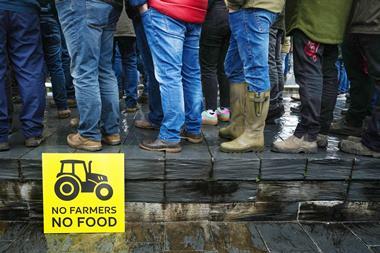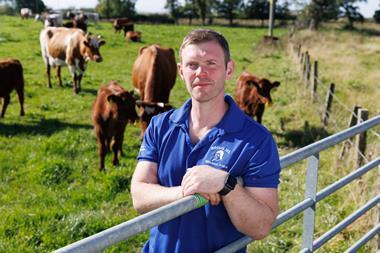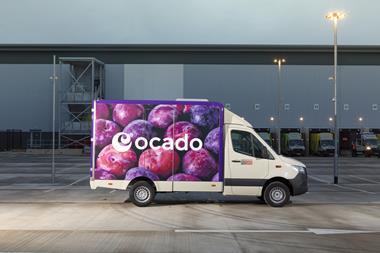After a series of failures for the local market, Pembrokeshire Creamery wants to make sure Wales can again process its own supply. Big contracts and big capacity goals are in place
The recent absence of Welsh-labelled milk on supermarket shelves has been a sore spot for the country’s dairy sector. After the 2019 collapse of Wrexham’s Tomlinsons Dairies, Welsh farmers needed to send their milk to England for bottling before it could return to Wales for sale.
But the May opening of Pembrokeshire Creamery in Haverfordwest offers a new beginning. The facility will once again allow Welsh milk to be produced, bottled and drunk without ever crossing the border. For Huw Thomas, Pembrokeshire Creamery’s CEO, the opening settles “unfinished business”.
“Wales needed a milk bottling facility otherwise half the economic footprint is sitting in plants in England,” he says. “The supermarkets find that uncomfortable, and I think if the consumers knew, they wouldn’t like it either.”
Some industry observers have, however, raised doubts over the viability of a Welsh dairy supplying exclusively for Wales. After all, it’s not been an easy time for the country’s dairies of late. Anglesey’s Mona Dairy was placed in administration in June. The following month, Evan Rees (Butter) Ltd of Swansea announced plans to close, with its Hollybush brand later being sold off to Gower View Foods.
Pembrokeshire Creamery, though, is confident its model will face a different fate. It’s backed by Puffin Produce, Wales’ largest supplier of local veg and flowers, where Thomas sits as CEO. Puffin invested around £14m in the project, raised through bank loans and equity injections, while around £6m came from the Welsh government.
The crucial factor in the dairy’s success will be staying competitive with its English rivals. Although it recognises it cannot compete on economies of scale with the likes of Müller and Arla, its “state of the art” tech means “the quality and integrity of the product will be compatible with the best in the UK”, insists Pembrokeshire Creamery MD Mark McQuade.
The dairy, which boasts a workforce of about 60, is still ramping up capacity but is already close to one million litres a week. Early 2025 will see phase two begin, as it looks to double capacity to around 100 million litres per annum.
More from The Dairymen 2024:
-
How the dairy category is getting fit for the future
-
Creative challenge: next-gen packaging ideas to liven up dairy
-
How Mathew Carver has hailed cheese from road to restaurant
-
Who holds the power in UK dairy?
Commitment to local sourcing
Pembrokeshire Creamery is trying to source all its milk from within a 30-mile radius, giving it a logistical advantage and reduced carbon cost – especially compared with sending milk to England.
Even in that small area, there should still be enough milk to keep the factory going. Pembrokeshire is home to about a quarter of Wales’ cows and, with AHDB estimating the country’s total milk production at around 1.9 billion litres, the milk available to Pembrokeshire Creamery will be about 500 million litres a year. With such volumes available, the main issue may be one of standards. Pembrokeshire has seen a huge intensification of dairy herds in recent years, which campaigners say has left the River Taf and River Cleddau on the brink of ecological collapse.
To assuage some of these concerns, the creamery plans to partner only with farms that are using grazed-based systems – though this will be a guideline rather than a requirement. “If somebody’s slightly outside, then it might be how can we work to get that into the balance we want,” says Thomas.
Another big issue is demand. Asda and Lidl are already signed up, enthused to bring Welsh-branded milk to their local customers. But with Pembrokeshire Creamery dedicated to keeping its milk within Wales – via the likes of its new Blas y Tir-branded range – the question is whether there are enough mouths to drink it all once full capacity is reached.
Average milk consumption in the UK is 70 litres per year, says AHDB, meaning a Welsh population of around 3.1 million people likely consume about 217 million litres each year. At full output, Pembrokeshire Creamery will therefore need to hold almost 50% of the Welsh market. It’s an ambitious target, and could be one reason why other dairy products are also in the pipeline. But, ultimately, success may rely on whether or not Welsh desire for homegrown products is as enthusiastic as the business believes.





























No comments yet